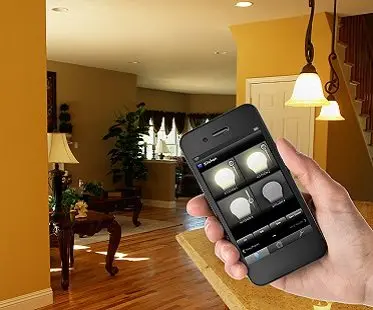

Smart lighting system errors can disrupt the seamless illumination and convenience that these systems promise. Often, these issues stem from a variety of factors, impacting both functionality and aesthetics. A smart lighting system is designed to provide automated control, energy efficiency, and customized lighting scenarios. However, errors can manifest in various ways, from flickering lights to complete system failure. This guide will delve into the multifaceted nature of smart lighting system errors, offering practical insights to troubleshoot and resolve these problems efficiently.
Understanding the Common Causes of Smart Lighting System Errors
Identifying the Root of the Problem
Smart lighting systems, while offering many benefits, are susceptible to various errors. These issues can arise from different sources, impacting everything from the individual light fixtures to the entire system. Faulty wiring, incorrect configurations, compatibility problems, and connectivity issues can disrupt the system’s functionality. Common errors include flickering lights, sudden power outages, and unreliable dimming or color adjustments. Incorrect installation practices or improperly configured settings within the system itself can lead to frustrating problems. A deeper understanding of these potential causes is crucial for effective troubleshooting. Understanding the sources of issues is the first step towards effective solutions.
Connection Problems
Electrical issues, faulty wiring, or weak signals from the power source can contribute significantly to smart lighting system errors. In some instances, poor connection between the light fixtures and the smart hub, or the smart hub and the power source, can create intermittent problems.
Diagnostic Steps for Identifying the Source of Errors
Preliminary Checks
When troubleshooting smart lighting system errors, a methodical approach is key. Begin with fundamental checks, starting with the simplest steps. A visually apparent issue could be the result of a loose connection or a faulty bulb. Begin by inspecting the physical connections of the system components to rule out simple causes. If issues persist, consider inspecting the power supply for irregularities. Inspecting the wiring, checking for loose connections, and assessing the power supply can often identify the underlying cause.
Advanced Diagnostics
Once the initial checks indicate a lack of obvious problems, it is time to delve into more sophisticated troubleshooting methods. Use a multimeter to test the voltage and amperage to ensure the system is receiving adequate power. Inspect the smart hub’s connectivity to the network and ensure it is operating properly. Examine any logs or error messages generated by the smart lighting system’s control app.
Solutions for Resolving Smart Lighting System Errors
Troubleshooting Wiring Issues
Verify that the wiring for the smart lighting system is properly connected and complies with electrical safety standards. Loose connections can lead to a variety of issues, including intermittent malfunctions and even fire hazards. Ensure proper grounding and that all connections are secure. Use insulated tools when working with the wiring to avoid creating new problems. Electrical experts should be consulted for issues that fall beyond an individual user’s capabilities.
Addressing Configuration Problems
Incorrect settings in the smart lighting system’s configuration can cause functionality issues. Double-check the configurations of your smart home system, ensuring that the lighting schedule, preferences, and compatibility settings are correctly applied. The manufacturer’s documentation should guide you through configuring the smart home system to reduce common errors.
Implementing Preventative Measures for Future Issues
Enhancing Installation Practices
Proper installation is fundamental to the long-term reliability of a smart lighting system. Hire a qualified electrician to handle the initial installation to ensure the system’s safety and optimize performance. Follow the manufacturer’s instructions precisely, ensuring the components are correctly positioned, wired, and configured. Ensure adequate ventilation and protection against weather conditions are also implemented.
Regular System Maintenance
Maintain the cleanliness and organization of the lighting components. Routine checks for loose connections, damaged wires, and other potential problems can help prevent future errors. This step is also useful for preventing further complications and prolonging the life of the system.
Common Error Messages and Their Solutions
Troubleshooting Specific Errors
Different smart lighting systems have specific error codes or messages associated with troubleshooting problems. Carefully review the error messages that appear on your smart home system or within the app to pinpoint the issue’s origin. Each error is unique and may require specific fixes or adjustments, so consulting the troubleshooting guide or contacting support for specific issues will help mitigate further problems.
Frequently Asked Questions
What are the most common causes of Smart Lighting System Errors?
Common causes include loose wiring, incorrect configurations, compatibility problems, or connectivity issues. These errors can manifest as flickering lights, sudden power outages, or unreliable adjustments. Careful inspection of connections and configurations should be the first steps in the diagnostic process.
How can I troubleshoot smart lighting system errors efficiently?
Begin with basic checks: inspect the physical connections of the system components and verify that the power supply is functioning properly. If issues persist, delve into more advanced diagnostics using a multimeter to check voltages and amperages and look for error messages or logs provided by the app or smart home system.
In conclusion, troubleshooting smart lighting system errors requires a systematic approach, focusing on identifying the source of the problem through careful observation, testing, and potential replacement. Understanding the various causes of errors and employing effective diagnostic methods can significantly expedite the resolution process, minimizing disruptions to the system and ensuring its smooth operation. For further assistance or to explore comprehensive solutions, consult our resources or contact our support team. Let us help you optimize your smart lighting system and experience seamless illumination.